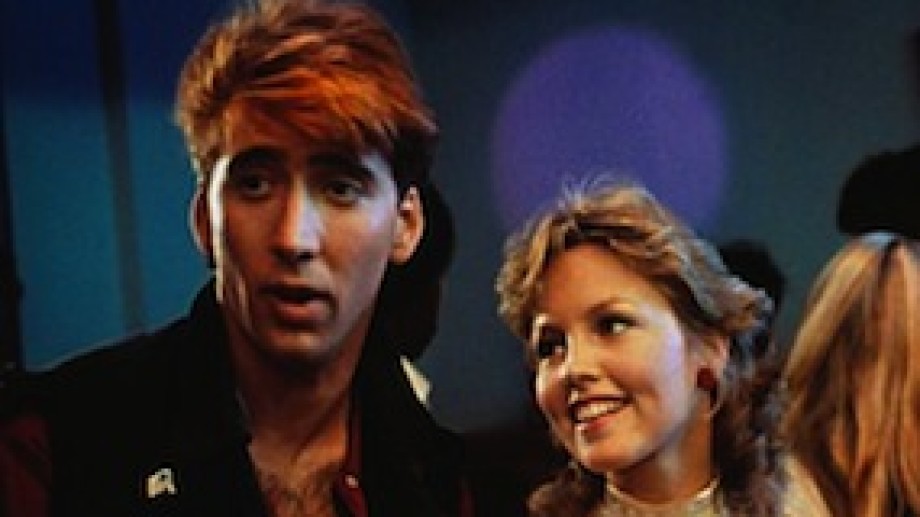
“This movie has chased me throughout my entire life,” announced Kevin Smith following the screening of Martha Coolidge’s Valley Girl on Saturday night. The director of indie cult favorites like Clerks and Chasing Amy wore his “traditional” get-up: baggy shorts and a custom-made hockey jersey, the name Smith hanging proudly above the number 37 plastered on the back -an esoteric reference to most, but not to the packed house at the Francesca Beale Theater. Smith’s loyal fan following didn’t disappoint on the opening weekend of our new Ellinor Bunin Munroe Film Center, turning out in droves to see the director moderate a Q & A with the makers of Coolidge’s seminal 80’s teen flick. Valley Girl director Martha Coolidge, star Deborah Foreman and cinematographer Frederick Elmes were all present for a lively conversation on the film’s low budget production and surprising cultural impact.
The event also served to kick off Smith’s “SMoviola presents,” a bi-monthly film series at the Film Society that will feature the acclaimed indie director screen and moderate talks with the people behind some of his favorite movies. Valley Girl was an easy choice to debut the series for Smith, it was the film he played as his wife began to go into labor. “I see things in this that I’ve stolen for my films and in my life,” confessed Smith. “I’ve totally said lines to girls and hoped they’d never seen the movie.”
Martha Coolidge was a New York based filmmaker when she was recruited by Francis Ford Coppola to move out to the west coast and become Zoetrope’s new, daring female filmmaker. She spent three years with the company researching and preparing for a film (a rock n’ roll love story, as she describes it) that never got made. The sour experience nearly derailed her but would come back to help her down the line, “What I didn’t know was that I was actually prepping Valley Girl,” shared Coolidge.
Years later, her friend, screenwriter Andrew Lane, approached her with a pitch. “‘It’s called Valley Girl,’ he told me. He said he didn’t want to direct it because it was about girls.” Coolidge took the job despite a rushed pre-production (two weeks) and last minute budget cuts, “It was a movie I knew I could direct better than anyone else.” Her cinematographer, Frederick Elmes, highlighted the dynamic that Coolidge brought to the project, “[The company] wanted a 90 minute long movie with bare breasts that was titled Valley Girl. They got this instead.”
Coolidge, who was paid a mere $5, 000 to direct, shared the frustrations of tackling a project with a producers that had low ambitions. She was given relative freedom to make the film however she wanted as long as she stayed on budget and included four scenes with naked breasts in the entire film. Other demands, however, like her wish to cast an African-American actress in a large supporting role, were turned down. Ultimately, the finished film is close to what she had envisioned -only being asked to cut four seconds from the first print.
Valley Girl is also the first film to give Nicolas Cage a starring role. At the time, Cage was a young actor living out of his car -nowhere near the first choice for the role. “We saw everybody from that generation,” said Coolidge. “All those ‘Brat Packers,’ or whatever, they came and I rejected all of them. I almost cast Judd Nelson but I got so tired of all those pretty boys that I walked over to the reject pile [of headshots], found a picture of Nic Cage and said, ‘Find me people that look like this.'”
Kevin Smith closed the evening by looking forward to his series at our new space. “The films I love and grew up with are now easy to bring to the Film Society,” said the director. “Twenty years ago I feel that if I would’ve asked to put on Valley Girl at Lincoln Center they would’ve told me to fuck off.” Although Smith might feel there was a lack of hospitality in the past, it’s hard to think that his future screenings with us will be met with any sort of hostility.
Pictured above: Kevin Smith with director Martha Coolidge, actress Deborah Foreman and cinematographer Frederick Elmes. Photo by Andrew Levengood.



